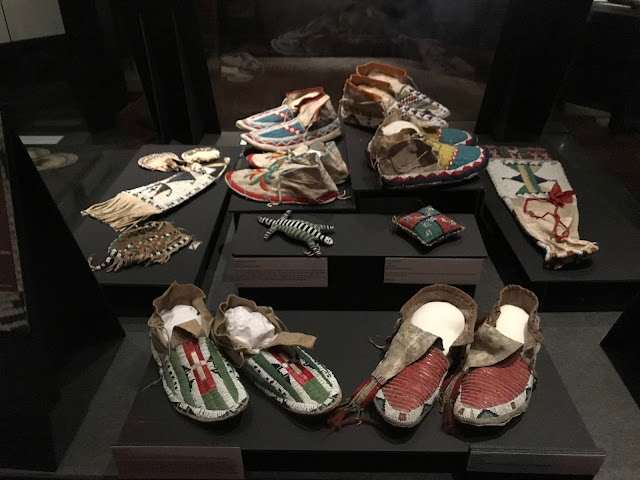The Visitors Center location is interesting. It's located in the northwest corner of Nebraska. Wyoming is 17 miles to the west and South Dakota is 42 miles to the north. It is in Sioux County and the ONLY city in the county is Harrison - the county seat for obvious reasons with a whopping population of 251 persons! The county is 2,000 square miles and the whole population of the entire county is only 1,500. Much of the area is ranching with the statistics of 25 acres per cow and calf pair. Holy cow. If you want quiet, this is your destination! There is plenty of parking at this Visitors Center for both car or RV.
First, we toured the Visitors Center (opened 9-5 in the summer; 8-4 in winter) and learned about the fossilized bones of the beardog. While this image doesn't look like much, trust me, these beardogs would be a nightmare if you encountered one! They were violent, vicious and scary creatures with huge jaws. I would not want to meet this thing on a dark and stormy night...or even a clear day!
 |
| Web Photo |
And, the museum there had a lot of other interesting cases of artifacts. This Visitors Center and Museum were professional done and very impressive!
 |
| The Winter Count displayed in the entryway to the James Cook Collection Gallery. Dawn Little Sky painted the hide in the early 1990s. |
The seed beads are amazing! It is very time consuming to make the beads, let alone weave them into clothes, shoes, vests, medicine bags, etc. I found this article interesting on the subject of the evolution of Dakota Beadwork.
This national monument has a junior ranger program and I would highly suggest for children to learn about the fossils as well as the Lakota Sioux. This is a diamond site and a must see for all Americans as you head up to South Dakota to see Mount Rushmore and other Americana sites! I highly recommend it!








































Very interesting!
ReplyDeleteI thought so, too. :-)
Delete